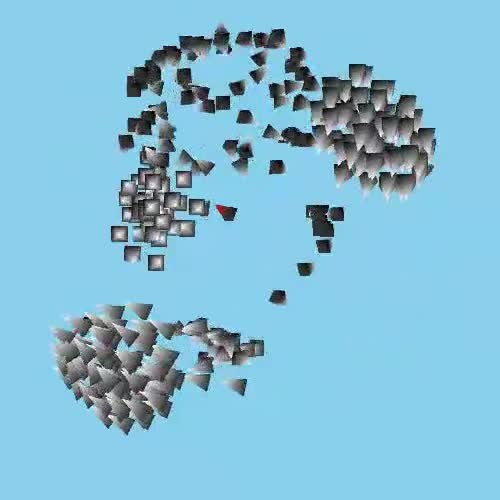The Corporation, Revisited
It's 2024. Time for an update.
There is a "flip side" to this theory. It's about how humans are assimilated into this machine. It turns out that assimilation is easier for most of us to understand since intelligent machines are (for most of us) a subject of Science Fiction ("AI"). In fiction, "AI" is presented for dramatic purposes as something super-human and implacably opposed to human life. "Real" AI is something else entirely. It presents a real and present threat precisely because it is poorly understood.
Most of us are familiar with the concept of assimilation. We take it for granted that "social" animals form entities (herds, swarms, flocks, schools) that have behaviour all their own—behaviour that cannot be described solely as the sum of the behaviour of the individuals. However, for some strange reason, we resist applying this idea to humans.
In the case of humans, social structure is more than simply sticking together for hunting and safety. Human societies are intelligently designed. In this sense, they are intelligent machines.
It's also true that the way that humans are absorbed in these social structures (assimilated) is uniquely complex. In this post, I'd like to focus on the most common and most powerful ways we are all assimilated:
- Being Alive. To be alive is to actively participate in the Universe. This forces us to divide the world into things useful and dangerous, such as "me" and "not me" and "mine" and "not mine" ...
- Being Human. Obviously, we all share a human mind and body, making it hard to relate to such things as the immorality of driving species to extinction. We share a mortal time frame of less than a century. Our senses are dull, but our minds are full of speculations that would never occur to an animal with comparable intelligence (such as a dolphin).
- Culture. The most noticeable aspect of culture is language, which limits what kinds of thoughts we can share and even the kind of thoughts we can have. Especially in the "West", philosophers have over-emphasized the role of language. Culture includes "technology" which surrounds us, opening all kinds of possibilities and limiting how we see the world. For example, if we have a gun, we will tend to use the gun to solve our problems with society. If we have poison, we will use it to exclude inconvenient living things from "our" environment.
- Flocking. The Boid hypothesis holds that many human "group" behaviours can be explained by simple rules governing all kinds of flocks and swarms. Deep psychology is not required.
 |
| Flock Behaviour Simulated by "BOIDS" |
Built on our common humanity and the fact that we are all absorbed into some kind of culture from birth, other powerful forces are brought to bear:
- Mythology. Structures our lives with a complex set of stories that provide a sense of "meaning" and direction (as long as they are not held up to close scrutiny)
- Economics, especially the mythology of money. For most human beings in 2017, money (and the need for it) is as real as air.
- Status. Backed by cultural myths, human societies automatically stratify into "haves" and "have-nots" - leaders and followers.
- Brute Force. We cannot overlook that, for most of humanity, there is no choice but to participate in society, even at the most desperately poor and disadvantaged level. When we go to war, most of us are "cannon fodder" with our individuality seen as an inconvenience and obstacle to the functioning of the war machine. On the other hand, when the tools of brute force are placed in our hands, we tend to use them - turning others into objects that exist only to further our personal ambitions. Ironically, such ambitions are themselves a product of assimilation. The oppressor is as assimilated as the oppressed.
--------- Comment: 2024 ---------
How does AI change this? I argue that computer systems have been making it much worse, even before "AI" burst on the scene. We are increasingly working for a machine - an algorithm - that often crushes all opposition while failing in its objectives. The best example is "DoorDash," whose algorithm screws the customer, the restaurant and the delivery person yet fails to make a profit for DoorDash.
Such situations are outside of the scope of my current AI interest. The only point here is that AI can be seen as just another iteration of turning everyone into a cog in a machine run by an algorithm. That's not really new.




Comments
Post a Comment